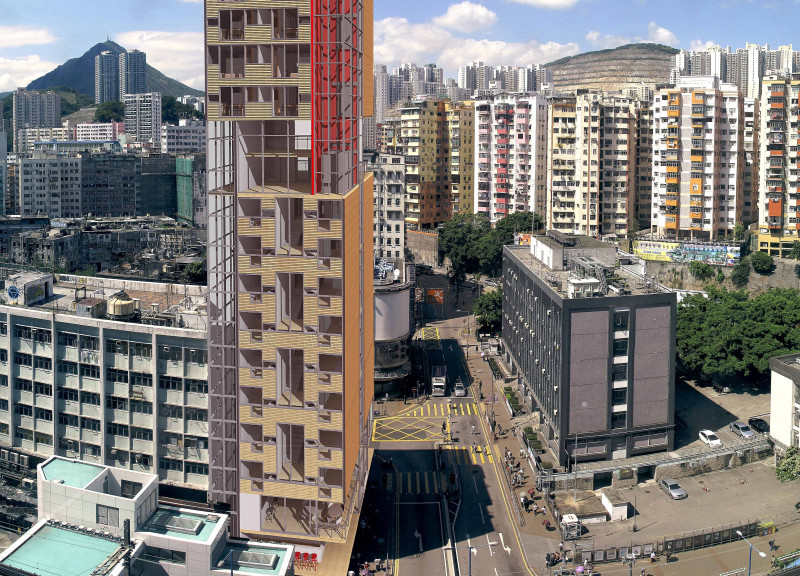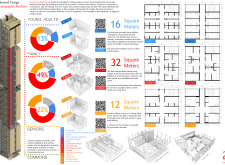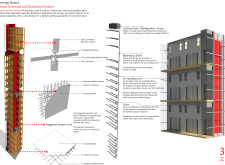5 key facts about this project
### Overview
The Hong Kong Pixel Homes project addresses the significant challenge of affordable housing in a densely populated urban environment. Strategically located in the neighborhoods of Kwai Tsing, Wong Tai Sin, and Kwun Tong, the development aims to provide responsive living solutions for a diverse demographic, including young adults, families, and seniors. By incorporating principles of flexibility, sustainability, and communal living, the project aspires to create a dynamic urban habitat that enhances community engagement while addressing the urgent need for innovative housing alternatives.
### Materiality and Structural Approach
The design emphasizes the use of sustainable materials, particularly bamboo, which plays a critical role in the structural framework. Glue laminated bamboo columns and cross laminated bamboo panels provide both aesthetic appeal and structural integrity, enabling larger spans and versatile internal configurations. Complementary concrete elements support vertical loads, while bitumen coatings enhance the building's durability through effective waterproofing.
A staggered elevator core facilitates access to shared spaces without disrupting vertical circulation, promoting interaction among residents. Additionally, the inclusion of natural structural systems streamlines air conditioning and water management, contributing to improved air quality within living units.
### Community-Centric Organization
The project prioritizes the creation of integrated common spaces that cater to a variety of user needs. These areas not only support recreational activities and communal gatherings but also house essential amenities, including restaurants, fitness centers, and art studios, fostering a vibrant community atmosphere.
To address the specific requirements of different age demographics, the design features tailored dwelling units: compact units for seniors, independent living arrangements for young adults, and family accommodations equipped with private dining areas. This demographic responsiveness, combined with the modular nature of the living spaces, allows for reconfiguration as residents' needs evolve, ensuring long-term sustainability and flexibility in urban living.






















































